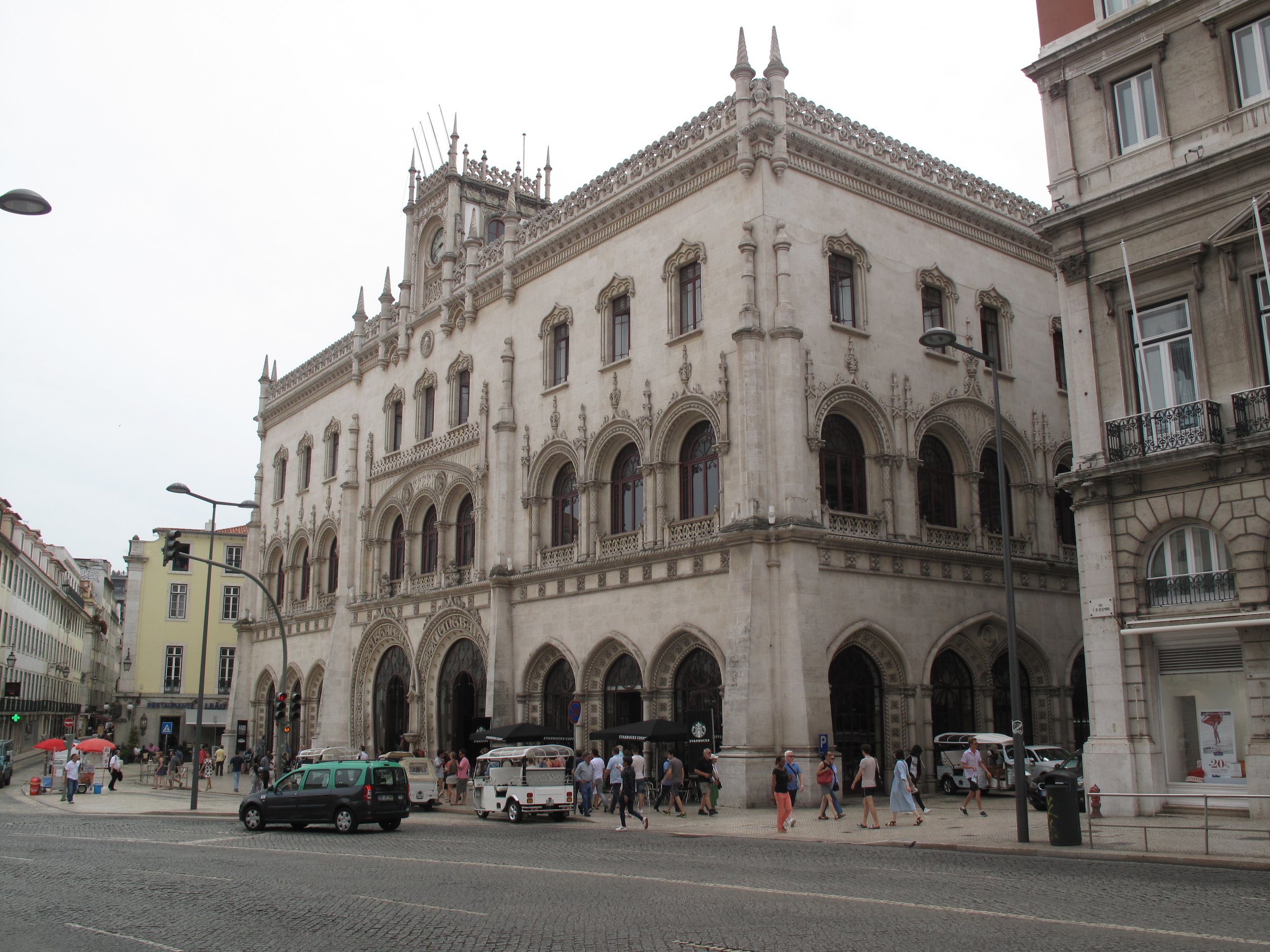Portugal. Lisbon and the Portuguese Age of Discovery
Vasco da Gama is remembered as a seafarer and explorer who spearheaded expeditions during Portugal’s Age of Discovery (1418-1620). Launching from Lisbon on July 8, 1497, da Gama and his crew became the first Europeans to reach India by sea. I was excited to visit Lisbon as part of a driving tour that also included much of southern Spain. Lisbon is Portugal’s capital and largest city (560,000). Covering a hundred square kilometers, it is positioned along the Atlantic coast and northern bank of the River Tagus. Among its distinctions, the city is the second oldest European capital city after Athens. Just forty kilometers northwest of the city is Cabo da Roca (Cape Roca), the western-most point in continental Europe.
Lisbon was occupied by pre-Celtic tribes during Neolithic times. Following defeat of Hannibal in 202 BC during the Punic Wars (264-146 BC), the Iberian Peninsula became part of the Roman Empire. Subsequently, the site of modern-day Lisbon became a Roman city called Felicitas Julia (aka Olissipo or Ulyssippo) and during the 4th century AD, a center of Christianity. In the 5th century the city was conquered by Germanic Visigoths and by the Moors during the 8th century. During its Moorish occupation, the city’s diverse population of Jews, Berbers, Mozarabs, and Muwallads were permitted to maintain their religious and cultural traditions. The city was briefly occupied by Norwegian crusaders in 1108. In 1147 King Afonso Henriques (the first king of Portugal) reconquered Lisbon with help from crusader knights and in 1255, the city became the new country’s capital. During the 15th and 16th centuries the city was a focal point of the Atlantic slave. Lisbon suffered from a devastating earthquake on November 1, 1755 that killed an estimated 60,000 persons. In 1807 the city was invaded by French military forces commanded by Napolean Bonaparte. During WWII Lisbon was an open city and a conduit for European refugees fleeing to the U.S.
Arriving by bus, my city tour began near the waterfront and Torre de Belém (aka Belém Tower or the Tower of Saint Vincent). The tower is adjacent to a park and small beach. Among the most prominent landmarks in Lisbon, Belém Tower was completed in 1519 as a military fortification. Featuring limestone walls, the building has Moorish-inspired minarets. Extending outward into the River Targus, it has two parts: a large bastion and a four-story tower that is thirty meters tall. Dungeons located inside were used to house prisoners until 1830 while walls around the bastion have spaces to accommodate 17 cannons. On the tower’s first floor is Sala do Governader (Governor’s Hall) that can be reached by a short causeway from the mainland. Today, Belém Tower is a ceremonial gateway to the city.
A short walk from Belém Tower is Padrão dos Descobrimentos (the Monument of the Discoveries). Completed in 1960 to celebrate the Portuguese Age of Discovery, the monument is positioned at the site where da Gama’s ships departed on his first journey to India (1497-1499), the longest sea voyage completed at that time. Da Gama led other sea journeys and in 1524 he was appointed governor of India. He died from malaria the same year and was buried in the Indian city of Kochi. Designed to resemble the bow of a Portuguese caravel, the monument is constructed from cement and rose-colored stone. Carved out of limestone, a statue of Henry the Navigator is on one side and figures representing the Age of Discovery (explorers, artists, map makers, and missionaries) on the other. Adjacent to the monument is a large compass rose fashioned out of colored tile. Directly across Avenida Brasilia is the former Jerónimos Monastery. Built by the Catholic Order of Saint Jerome, the monastery was constructed in the early 1500s with a Portuguese Gothic Manueline design. In 1539 da Gama’s remains were moved to a nave inside the monastery’s church. The monastery has been a UNESCO World Heritage Site since 1983.
We made another stop near the waterfront to visit Monumento aos Combatentes do Ultramar (Monument to Overseas Combatants). Positioned between Torre de Belém and Forte do Bom Sucesso, the monument was built to honor soldiers and sailors lost during the Cabatentes Ultramar (aka Overseas War). The war was fought at the behest of Antonio de Oliveria Salazar who served as prime minister between 1932 and 1968. Between 1961 and 1974, Portuguese soldiers fought in three African theatres and more than 9,000 lost their lives. After years of fighting, public sediment turned against Salazar who was deposed in a 1974 military coup. The monument’s black and white pillars extend upwards from a pond, built as a metaphor for oceans that separated combatants from their homeland. The monument’s pillars symbolized unity and its honor guard is sometimes compared to the one at Arlington National Cemetery’s Tomb of the Unknown Solider in Washington, DC.
A final segment of our walking route included Rossio Square and Rossio (aka Estaçăo) Train Station. The station was completed in 1891 for the Portuguese Royal Railway Company. It has a Neo-Manueline façade on its northwest side and horseshoe-shaped portals framing its main entrance. Trains enter an underground portion of the station from a 2.9-kilometer tunnel excavated in the late 19th century. In 1957, Rossio became the city’s principal train terminal.






